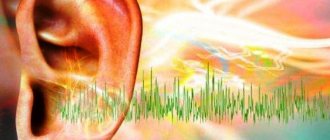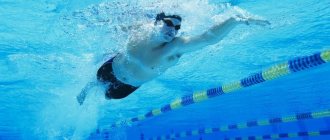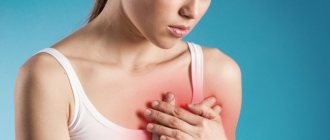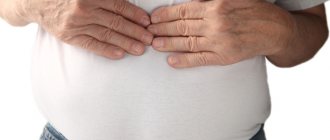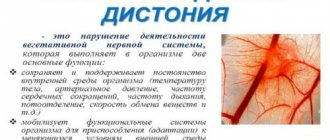Vegetative-vascular dystonia is a complex of pathological processes in different body systems. VSD is a controversial diagnosis and is not included in the international classification of disorders.
Today the concept of neurocirculatory disorder is most often used. Headache with VSD occurs in people due to a disorder of neuroendocrine regulation. The disease often develops benignly and does not imply a danger to the patient’s life.
VSD is accompanied by a list of various symptoms that are aggravated by stress or after adverse effects of the environment. Cephalgia is considered one of the main signs of the disease.
Causes of cephalalgia
Cephalgia with neurocirculatory dystonia differs in vascular origin. It manifests itself in patients after fatigue or nervous breakdown. Most often, headaches occur in adolescence, since the nervous system of such children is not stable.
VSD implies many different clinical signs, as well as tachycardia, shortness of breath, cardialgia, and chest pain. They all have a close relationship, so cephalalgia manifests itself independently or against the background of some symptoms.
Headache attacks with vegetative-vascular dystonia occur under the influence of external and internal factors affecting the body:
- Injuries of the skull and collar area.
- Viruses, bacteria.
- Drinking large amounts of alcohol, cigarettes, and psychotropic drugs.
- Constant stress, lack of sleep and rest.
- Intoxication, fumes in a variety of chemicals.
- Poor climate conditions in the region.
- Poor quality diet, few nutrients.
There are several endogenous causes that provoke headaches in people with vascular dystonia:
- Bad heredity.
- Individual reaction to certain external factors.
- Allergy.
- Problems with the functioning of the reproductive or endocrine glands.
- CNS disorders or psychological dysfunctions.
- Increased nervousness of the patient, impressionability.
Headache in patients with vascular dystonia occurs due to poor blood supply to the brain.
When diagnosing patients, problems with blood flow in the neck, spasms or hypotension are detected. If there is a suspicion of neurocirculatory dystonia, the specialist must prescribe several diagnostic procedures:
- ECG.
- EEG.
- Vascular ultrasound.
Such examinations make it possible to detect vascular conduction disorders in a timely manner. Doctors say that patients with VSD have problems with the hypothalamic-pituitary system. Various disorders can not only cause headaches, but also worsening well-being, nervousness and depression.
Which doctor should I contact?
You can start examinations at the therapist’s office if you are worried about constant headaches due to long-term vegetative-vascular dystonia. Next, the specialist, depending on the symptoms, will refer you to a cardiologist, neurologist or psychiatrist.
Additionally, tests are prescribed: blood and urine, gastroscopy (if necessary), tomography and nuclear magnetic resonance, EchoEG, ECG, rheovasography.
Headache with vegetative-vascular dystonia is a common consequence of external and internal factors provoked by stress, fatigue and certain diseases. The effectiveness of its elimination depends on correctly selected medications that correspond to the type of pain: migraine, tension or cluster pain.
How does the disease manifest itself?
Vegetative-vascular dystonia may not manifest itself for a long period; it needs to develop in the human body asymptomatically. This condition has been going on for more than a year, but a resumption should still be expected.
Initially, the symptoms are not clearly expressed, making differential diagnosis more complicated. Over time, patients and doctors no longer have doubts about the presence of vascular dystonia of the head in the body.
The disease manifests itself in this way:
- The body reacts sharply to weather changes.
- Headache is accompanied by tinnitus.
- Fatigue increases.
- I constantly want to sleep.
- Painful sensations in the heart area.
- Panic attacks, neurological disorders.
- Changes in blood pressure.
- Urinating too frequently.
- Intense sweating.
- The head, arms, legs are shaking.
- Muscle tone deteriorates.
During illness, a person looks exhausted.
Causes of headaches
With VSD, the endocrine and nervous regulation of the cardiovascular system is disrupted; the body reacts to any stressful situations and loads with a sharp narrowing or dilation of cerebral vessels. Vascular spasms lead to attacks of pain, spasms of the walls of blood vessels and disruption of blood flow. There are two groups of reasons that can cause a headache:
- External factors:
- stress;
- unpleasant situations in the family, at work;
- sleep disturbance;
- unfavorable climatic conditions;
- poor nutrition;
- bad habits;
- head and neck injuries;
- viruses and intoxication of the body.
- Pathological features of the body:
- hormonal imbalance;
- obesity;
- sedentary lifestyle;
- suspiciousness and excessive emotionality;
- allergy;
- hereditary diseases.
Often the appearance of painful sensations during VSD is associated with physical and emotional overload. The attacks may cause irritability, bad mood, tearfulness, and nervousness. All this deprives a person of a full life, interferes with work and family relationships. Constriction of cerebral vessels during VSD also negatively affects health and over time can lead to the development of cardiovascular pathologies.
Migraine
Headaches with VSD in the form of migraines often occur in women. The main provoking factors are considered to be: stress, crowded places, physical stress, alcohol abuse.
Migraines can occur on one side with increased pulsation or concentrate in the temples, transferred to the frontal lobes or eyes.
Associated symptoms:
- Nausea.
- Intolerance to bright lighting.
- Chills.
In order for the headache to disappear, you need to limit exposure to light and sound for a short time, and try to relax. After some time, the symptoms subside.
What causes headaches?
There is a high risk of pain-tension after strong experiences and nervous tension. Such sensations are typical for those whose work is related to memory and concentration, as well as under high mental stress.
Migraines often occur due to other reasons: noisy crowds of people, increased physical activity, stress and alcohol abuse.
Cluster pain in vegetative-vascular dystonia is almost always observed in men and can occur at night. The nature of their appearance has not been sufficiently studied.
Voltage
This type of pain causes severe nervous shock, intellectual stress, the need for regular concentration, and memory strain in a work environment.
Such symptoms are observed in both hemispheres like a ring compressing the skull. To get rid of headaches, you need to rest or change the type of work. During hard work, you will need to take breaks and avoid getting into stressful situations.
Prevention
Those suffering from cephalgia need to strengthen the cardiovascular and nervous systems, and strengthen the immune system. It is these goals that are the main ones in the prevention of pain syndrome in VSD.
Before using medications prescribed by your doctor, you can try to relieve the pain yourself. To do this, you need to adhere to the following rules for a long period:
- Visit a neurologist or psychiatrist to make an accurate diagnosis and prescribe a course of treatment.
- Change your lifestyle. Get proper rest, spend more time outdoors, and follow a work routine.
- Avoid stressful situations.
- Do moderate physical activity (biking, walking, swimming, morning exercises).
- Sleep 8 hours a day.
- Eat properly. Fill the menu with products that strengthen the immune system, blood vessels, speed up metabolism (greens, fruits, vegetables).
- Ventilate the room you are in (at home, at work) more often.
- Give up alcohol and cigarettes.
These rules will help eliminate cephalgia during VSD if you make them a way of life and follow them constantly, and not for a short time. You can quickly get rid of headaches by combining taking pills with folk remedies.
Did you like the article? Save it!
Still have questions? Ask them in the comments! Cardiologist Mariam Harutyunyan will answer them.
Ivan Grekhov
Graduated from the Ural State Medical University with a degree in General Medicine. General practitioner
Cluster pain
Often, headaches with VSD of this nature occur in men. A characteristic feature of cluster pain is its manifestation at night. In the morning the symptoms go away. Such symptoms are felt only in one part of the head or the temporal lobe, frontal, near the eyes, eyebrows. Symptoms can spread to the cheeks, neck, and chin.
Associated symptoms include:
- Drooping of the eyelid, profuse production of tears.
- The skin on the face turns red.
- Intense sweating.
To avoid the occurrence of such symptoms, you need to quit smoking, use psychotropic drugs, get rid of overwork, and sleep well.
Classification
Headaches are often primary and accompany VSD:
Migraine
It is characterized by throbbing pain in the head. At the same time, only one side of it hurts. The pain syndrome can last up to 72 hours. Occurs in the morning or later in the day. It is not always possible to reduce pain with medications.
People whose professional activities require heavy mental and physical stress are most prone to migraines.
Tension pain
Appears in the afternoon or evening. It has a pressing nature, but is easily relieved with tablets.
Cluster headache
Appears at night and disappears in the morning. The intensity of the pain syndrome is highest in the first minutes of its manifestation. The pain is felt on one side of the head: above the eyebrows, in the temples, forehead, crown and eyes. Sometimes it radiates to the jaw, cheeks and chin. Cluster-type cephalgia most often affects men.
VSD, accompanied by constant headaches, is one of the reasons for the deterioration of the quality of life and the development of depression. Therefore, it is important to find the factor that provokes the occurrence of cephalgia and begin taking therapeutic measures.
Reasons for appearance
With vegetative-vascular dystonia, the headache may be of a vascular nature (resulting from deterioration of blood circulation in the brain). But in most cases, it is a sign of a malfunction of the nervous system: central and autonomic. The first is responsible for thinking, processing information, and reacting to external stimuli. The second one supports the tone of the heart, blood vessels and intestines.
But there is also a third part of the nervous system - the peripheral one: it transmits impulses from receptors to the brain and spinal cord. The functioning of all these systems is interconnected.
If the functioning of the central nervous system deteriorates, this leads to dysfunction of the internal organs (dystonia appears), and malfunctions in the functioning of the autonomic system lead to disorders of the central nervous system (headaches begin).
On this topic
- VSD
8 causes of cardiac dystonia
- Natalia Sergeevna Pershina
- June 9, 2020
The reasons for weakening the nervous system are different. But, as a rule, the appearance of cephalgia during VSD is provoked by:
- stress;
- emotional turmoil;
- lack of sleep;
- strong mental stress;
- overwork;
- malnutrition ;
- smoking;
- wearing tight glasses, hats;
- consumption of alcoholic beverages.
Other causes of headaches with dystonia:
- infectious diseases;
- changes in blood pressure;
- injuries ;
- hormonal imbalance ;
- diseases of the hearing organs, eyes;
- genetic predisposition;
- chemical poisoning
- deficiency ;
- irradiation;
- passive lifestyle.
Women and children growing up in dysfunctional families are most prone to headaches. To alleviate the syndrome, you need to pay attention to the person’s overall well-being: are there other signs indicating the manifestation of VSD.
Worsening in the morning
Vegetonics tend to have headaches in the morning when a person wakes up. Painful symptoms last a long time, are characterized by regular pain, and are not caused by changes in activities, physical activity, or various circumstances.
When complex work is performed and a person tilts his head, the symptoms worsen, and a pulsation is felt in the head. Patients experience slight clouding of consciousness and a feeling of stupefaction. Symptoms do not go away until the patient falls asleep; after waking up, symptoms may recur.
With VSD, painful symptoms do not occur at night, and people do not feel discomfort during sleep. The attacks may begin during the day and continue until the patient falls asleep.
In complex stressful situations, panic, and neuroses, the symptoms are similar to migraines located in the temporal lobe, and the blood pressure changes. The patient feels squeezing and tension in the eyes.
Treatment of cephalalgia
Therapy for VSD includes a set of measures, including:
- Etiological.
- Pharmacological.
- Psychotherapeutic.
Effective:
- Physiotherapy.
- Acupuncture.
- Massage sessions.
- General strengthening activities.
- Sanatorium-resort therapy.
Acupressure and acupuncture help relieve pain, prevent exacerbation of an attack, relax the patient, stabilize blood pressure, and provide an analgesic effect during prolonged attacks.
Etiological measures
Etiological methods involve eliminating the causes that caused VSD and headaches. The result of treatment is a decrease in the number and severity of cephalalgia attacks. The patient’s well-being improves, a stage of remission occurs, and sometimes an absolute cure.
For migraines and tension pain associated with stress, it is necessary to minimize worries, solve family problems and conflicts at work, and learn to calmly perceive negative information.
When pain is caused by infections or toxic poisoning, treatment is aimed at eliminating the pathological focus. Physical activity is limited. The patient is asked to do:
- A visit to the swimming pool.
- Gymnastic exercises.
- Yoga.
- Light fitness.
- Walking.
- Riding a bicycle.
Headache due to VSD due to hormonal imbalance is treated by an endocrinologist or gynecologist.
Pharmacological measures
Drug therapy is aimed at stabilizing the functioning of the hypothalamus and eliminating disorders that lead to malfunction of the nervous system.
- Vegetoneurosis, accompanied by headaches, is treated with natural sedatives. In this case, valerian extract, Tricardin, based on valerian root and hawthorn fruits, and motherwort tincture are used.
- Systematic outbreaks of cephalgia and vegetative exacerbations are treated with tranquilizers. Treatment takes about 3 weeks.
- For tension pain and pressure surges, anxiolytics are prescribed. A common medication is Diazepam, which has an anticonvulsant, sedative, and muscle relaxant effect.
- Headache due to VSD, combined with a depressive state, requires taking antidepressants with individual selection of drugs. Amitriptyline is often used for these purposes.
- Those suffering from VSD and frequent headaches are prescribed nootropics that improve blood circulation in the brain and reduce the risk of hypoxia (oxygen starvation). The main drug here is Piracetam. Take it for at least 1 month.
- For cephalgia caused by VSD and cervical osteochondrosis, cerebroangiocorrectors are often prescribed. These are drugs that dilate blood vessels in the brain, increase blood flow, and improve oxygen saturation of parts of the brain.
- Beta blockers, for example, Anaprilin, have a positive effect on the body.
- People exposed to stress and weather changes take adaptogens based on herbal components. For high blood pressure, tincture of Schisandra Manchurian or tincture of ginseng helps well.
Analgesics, antispasmodics, and non-steroidal anti-inflammatory drugs can eliminate pain.
Psychotherapeutic measures
In combination with drug therapy, psychotherapy helps to overcome VSD and headaches. The psychotherapist explains the cause of the disease, emphasizes its benign nature and sets the patient up for a positive outcome of treatment.
Much depends on the patient himself. Prevention and reduction of the intensity of outbreaks of pain in the head is given to:
- Self-hypnosis.
- Autotraining.
- Muscle relaxation.
Phytotherapy
Herbs have long been considered the strongest medicine for many diseases. For headaches caused by vegetative neurosis, it is recommended to use decoctions of rhizomes and parts:
- Peppermint.
- Common motherwort.
- Hawthorn.
- Pharmaceutical chamomile.
- Oregano.
- Black elderberry.
- Rosemary officinalis.
- Melissa officinalis.
Before taking decoctions, you should consult your doctor and discuss with him the duration of the course. It is known that prolonged use of herbal medicines gives a rebound effect. Therefore, you need to use herbs with short breaks.
Methods for treating headaches
Before prescribing medications, the specialist checks the functioning of the patient’s circulatory system. This makes it possible to get rid of other complex disorders. When you have a headache due to VSD, the accompanying symptoms may be different. When the condition worsens, it begins:
- Diarrhea.
- Intense sweating.
- Dyspnea.
The listed symptoms are caused by an imbalance in the functioning of the nervous system, so therapy must be applied to the cause of the pain. Before starting drug treatment, doctors try to eliminate the disease in the following ways:
- Changing your lifestyle, you need to rest more often, walk in the air.
- Balance your diet, use foods that stimulate metabolism, and eat more plant foods. If your food is low in fiber, you may experience diarrhea. Therefore, the change in diet should be gradual.
- Physical activity for dystonia stabilizes the condition; you need to discuss acceptable sports activities with your doctors.
- It is advisable to stop smoking and drinking alcohol, as toxins negatively affect the nervous system and provoke seizures.
If you take a walk outside once and do not get the desired effect, your headache may decrease until the next attack occurs. In accordance with the above recommendations, you need to change your lifestyle.
Treatment in various ways
There are many ways to relieve headaches, but VSD firmly rejects most of them. The disease requires a comprehensive approach, and pills alone cannot help. Moreover, eliminating headaches is possible without drug intervention with a complete review of your life with diagnosed dystonia:
- Regular observation by a doctor;
- Changing lifestyle, introducing regular walks, balancing work and rest;
- Changing the diet, including foods for immunity and blood vessels. Elimination of too salty, fatty and sweet foods;
- Introduction of moderate physical activity;
- Complete cessation of bad habits.
The doctor prescribes medications for headaches depending on the problem.
Drug therapy
Pathogenetic treatment makes it possible to stabilize dysfunction of the limbic system, malfunctions of which cause disruptions in autonomic nervous activity.
With mild development of the disorder, cephalgia occurs, natural sedatives and antispasmodics are used:
- Valerian tincture.
- Tricardin.
- Pustirnik.
- Hawthorn.
For severe headache attacks, neurotic symptoms, and vegetative crises, tranquilizers can be used, and the course of treatment should not last more than 3 weeks. Elenium has a muscle relaxant effect during spasms of blood vessels in the nervous system .
During tension and hypertension, diazepam is used. The medicine helps eliminate productive symptoms of a psychogenic nature, but also increases the pain threshold. Mezapam, which is regularly used for VSD for preventive purposes, has a vegetative-stabilizing effect.
For headaches due to depression, antidepressants , but the list of drugs has limitations. Amitriptyline is used more often for neurogenic chronic attacks.
Nootropics stimulate blood supply to the brain and reduce the effect of hypoxia. Medicines are widely used to relieve headaches due to VSD. Medications containing piracetam are prescribed and must be used for at least a month.
Cavinton is quite effective in treating headaches with vegetative symptoms . The medicine helps to dilate blood vessels in the brain, stimulate blood flow, and saturate neurons with oxygen. This is useful for cerebral angiodystonic symptoms and concomitant osteochondrosis.
Patients with VSD show sensitivity to changing weather conditions and do not adapt well to stress. Weather conditions change or certain situations cause unpleasant symptoms.
Adaptogens are used to reduce the impact of external factors.
Types of headaches with VSD
The use of medications for headaches in vegetative-vascular dystonia is possible only if the drug corresponds to the type of cephalgia:
- Pain and tension. More often they occur after the middle of the day, are more easily tolerated than other uncomfortable sensations and can be successfully relieved with medications (especially in the case of VSD, which occurs against the background of worsening blood circulation);
- Migraine. It is difficult to get rid of migraine attacks using standard tablets available without a doctor's prescription. Headaches, accompanied by strong pulsation, are located in one area of the skull and can occur either suddenly or gradually. More often, headaches in the form of migraines attack people who have great responsibility. Physical exercise can also cause headaches if abused after several attacks of vegetative-vascular dystonia;
- Cluster headaches. Such cephalalgia is less common and has not been sufficiently studied within the boundaries of vegetative-vascular dystonia. Headache develops due to problems in the functioning of the nerve fibers and vessels of the head with a long course of vegetative-vascular pathology. The sensations are sharp, cover the eyes and frontal part, go towards the temple and slightly cover the neck. Attacks can last from 2 to 90 minutes.
Cluster headaches, which are possible in rare situations with vegetative-vascular dystonia, are practically not treatable with medications.
Important! The concept of neurocirculatory dystonia only enters into the general picture of VSD, but cannot be an independent term.
Each type of headache with VSD has a specific description:
- Tension pain lasts for several hours or even days with vegetative-vascular dystonia. Discomfort is not accompanied by nausea, and throbbing is usually absent. Headache with vegetative-vascular dystonia has a compressive nature. It often goes away after a light neck massage, eye exercises and sleep;
- Migraine headaches are localized on one side and can last up to 4 days without treatment. A specific symptom of migraine is a sharp deterioration in health when changing body position. With the use of individually selected tablets, relief is possible within 3 hours maximum;
- Cluster cephalgia affects a person with acute, not too long-lasting attacks, which occur up to 8 times a day.
Headaches can be identified by specific signs of long-term vascular dystonia.
Strengthening blood vessels
If disorders of large arteries, vessels and capillaries develop, you need to get rid of the seizure with the help of medications, then follow the advice of doctors and take preventive measures. If nothing is done, the disorder will only get worse. Expert advice for vegetative-vascular dystonia and predisposition to headaches:
- Food should contain as much potassium and magnesium as possible.
- In the patient’s life, it is necessary to reduce the amount of emotional and physical stress.
- It is recommended to take a contrast shower, do gymnastics, get rid of autonomic disorders, and improve the functioning of the immune system.
- It is necessary to regulate the sleep phase, use different options in their natural form, and not use questionable medications for the purpose of superficial self-medication.
Why does pain occur in the head?
As mentioned above, the underlying cause of tension headaches is unknown. Neck muscle tension, decreased pain threshold, or stress can be triggers for tension-type headache.
Recent studies have shown that genetic predisposition plays a role in the development of the disease.
The term tension headache was first coined in 1988 by the International Headache Society. There is no convincing theory explaining the etiopathogenesis of TTH. There are a number of factors that may be involved in the formation of this type of disorder.
The causes of HDN are many and varied
Muscle tension in the neck and head
Excessive muscle tension in the head and neck has long been considered the main cause of tension-type headache. However, recent studies have shown that excessive muscle tension occurs in only 50% of patients. Ultimately, scientists don't know whether this is a cause or a consequence of HDN. It should be noted that head muscle relaxation methods help relieve an attack only in 20% of all cases.
Low pain threshold
The pain threshold is the strength of irritation at which the stimulus is perceived by the body as pain. The pain threshold is different for each person. With hypnosis or extreme stress, the pain threshold may increase, and with a depressed mood, it may decrease. In the chronic form, the pain threshold may be reduced, so that even relatively harmless stimuli lead to pain.
Psychological factors
Some patients experience tension-type headaches during severe psycho-emotional stress. This fact supports the assumption that mental factors such as stress, anxiety or depressed mood play a role in the development of the disease.
TTH may occur in response to anxiety or stress
Metabolic disorders in the brain
Serotonin, dopamine and norepinephrine are endogenous substances that participate in the transmission of signals between nerve cells. Among other things, they regulate the perception of pain. Certain antidepressants that are successfully used to treat pain syndromes affect the distribution of neurotransmitters in the brain.
The revealed effectiveness of antidepressants for headaches led to the creation of the monoamine hypothesis of tension-type headache. According to this hypothesis, an imbalance of neurotransmitters can cause headache attacks.
Multifactor hypothesis
There is no single theory that would explain the cause of the disorder. In all likelihood, many factors play a role in the development of the disease. Therefore, patients should not limit themselves to treating only one cause of the disease. The above factors together can intensify headaches with VSD and lead to various complications.
Drug treatment
If non-drug treatment is ineffective, when the headaches are not eliminated and worsen the quality of life, the patient is prescribed medications. These medications are represented by the following means:
- soothing herbal tinctures;
- nootropic drugs;
- sedatives;
- medications to improve blood circulation;
- drugs to normalize blood pressure;
- tranquilizers.
As a rule, medications are used for severe stages of VSD.
- Adrenergic blockers (“Anaprilin”) eliminate painful symptoms in the heart, stabilize ri src=”https://kardiodocs.ru/wp-content/uploads/2017/12/anaprilin-pri-distonii.jpg” class=”aligncenter” width= "1000″ height="616″[/img]
- ACE inhibitors (Captopril) normalize blood pressure.
- Vasodilators (Vinpocetine, Cinnarizine) improve brain functioning.
- Neurometabolic stimulants (“Nootropil”) promote metabolism in the nervous system.
- Sedative medications (“Fitosed”) have a calming effect, eliminating restlessness, anxiety, and apathy.
- Tranquilizers and antidepressants (Seduxen, Gidazepam, Elenium, Phenazepam) improve mood and eliminate the symptoms of vegetative-vascular dystonia.
- Neuroleptics (Haloperidol) are used in the treatment of severe mental disorders.
- Multivitamin complexes eliminate nutrient imbalances in the body.
Headaches associated with VSD usually require treatment over a long period of time. Treatment with medications in such situations often gives positive results. Doctors use a variety of medications, because it can be difficult to get rid of headaches due to VSD by taking one remedy. It should be noted that the use of sedatives, tranquilizers and antidepressants in therapy stops attacks and serves to prevent their occurrence. The choice of the right medicine is carried out with the participation of several doctors.
How to relieve a headache during an attack
There are many ways to relieve headaches during an acute attack. It can be quickly eliminated only with the help of medications. The harmless one is Valerian tincture or Tricardin. These are sedatives that relax the body, which reduces pain. If you have attacks regularly, you can take a tranquilizer such as Elenium. Provided that the pain appears due to nervous overstrain, you can use “Diazepam”, “Mezapam”. Effective remedies for pain will be those that are in the medicine cabinet: paracetamol, analgin, citramon. After taking the pill, it is advised to drink a cup of espresso and take a walk in the fresh air.
